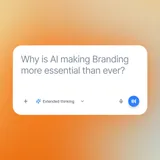
Designing the Future
The collaboration between Jony Ive and OpenAI goes beyond gadgets or features.
This collaboration marks a fundamental shift in designing the future. A shift that is rooted in values, putting a premium on a humane approach to innovation. It feels less like a product launch and more like a cultural statement on what truly matters in technology.
Before discussing products or features, they began with a conversation about what truly matters — the ideals, the humanity, and the emotional quality of how we engage with technology. What makes this collaboration truly exciting is not just the promise of new tools, but the clarity of its priorities —beginning with values.
At Mucho we have been working at the intersection of design and values for over two decades, and we have always believed that design is more than what lays on the surface. It is rooted. It is cultural. Every design decision expresses what we care about, and quietly teaches others to care too. When you place design at the center of innovation — not as decoration, but as direction — you get something more meaningful than performance. You get resonance.
This is what makes this partnership between tech and design so exciting: it restores the central role of design in this age of technological revolution. When technologists and designers are not just busy making the next hype-driven product, but instead, they invest in deeply think about how it works, how it feels, and how it fits into the bigger scheme of things, design emerges above the craft, to become a compass.
The future is not given. We believe it is something we get to design. And for the first time in history, we have tools powerful enough to match the scale of our imagination — and hopefully, values that are clear enough to guide them.
Design is more than what lays on the surface…every design decision expresses what we care about, and quietly teachers others to care too.
Change starts from better questions
That is what excites us the most. Asking harder, better questions before rushing to answers. When design speaks fluently in the language of the times. When design becomes culture. When the act of designing is taken as an opportunity to reflect who we are — and who we want to become.
We are not just witnessing a technological shift. We are witnessing a cultural turning point.
And we are here for it.
Illustrations: @Lenka.re


